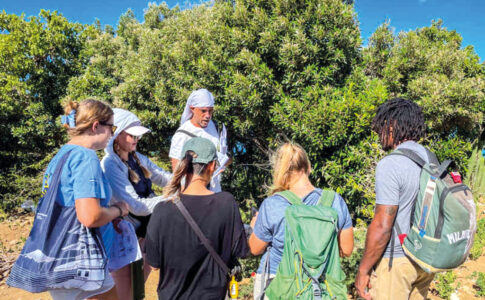In Saint-Martin, seaweed strandings on the coast are decreasing, according to the latest survey from the Health Agency (ARS) for the 2nd week of January. An interministerial mission to study sargassum will soon be moving to our territory.
ARS agents noted a small amount of algae at sea. As for gas emissions (H2S), they are below the detection threshold, according to the agency. The priority points to watch - because of the amount of algae and the proximity of the dwellings - are Cul-de-Sac Bay, North Orient Bay and Lucas Bay. No sector is on the red list (very large quantities next to homes) of the ARS. In Saint-Barthélemy, the coves of Cayes and Marigot are particularly monitored (red list) because of the large number of algae and odors (rate remains below 0.2 ppm), according to the agency. The president of the Collectivity Aline Hanson and the prefect Anne Laubies will draw up a report on Friday morning on the collection of Sargassum, carried out by the brigadiers of the association "Center Symphorien d'Insertion".
Interdepartmental study mission on sargassum: three senior officials will be present in Guadeloupe until January 25 to carry out a study mission on sargassum on the initiative of the Minister of Ecology Ségolène Royal, the Minister of Agriculture and Agrifood Stéphane Le Foll, as well as the Minister of Overseas George Pau-Langevin. This delegation will also travel to Saint-Martin and Saint-Barthélemy. The general inspector of the administration Tristan Florenne and two general engineers of bridges, waters and forests, François Guerber and François Colas-Belcour, will "facilitate the establishment of a long-term management of the stranding phenomenon sargassum and formulate lasting solutions for the collection and enhancement of algae ”, according to the prefecture. Their report is expected in March.
6,169 total views






No comments